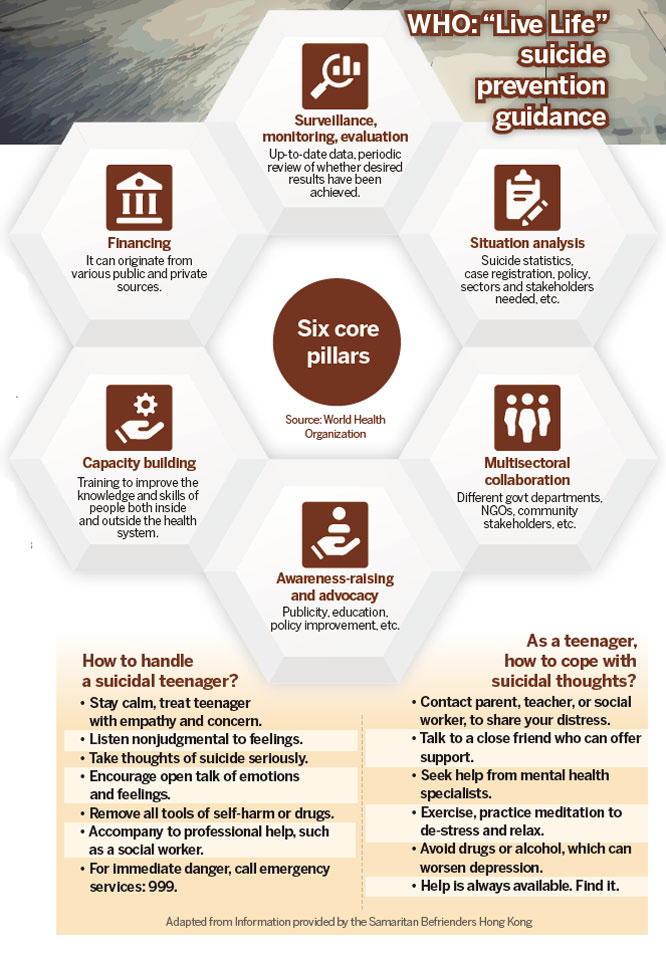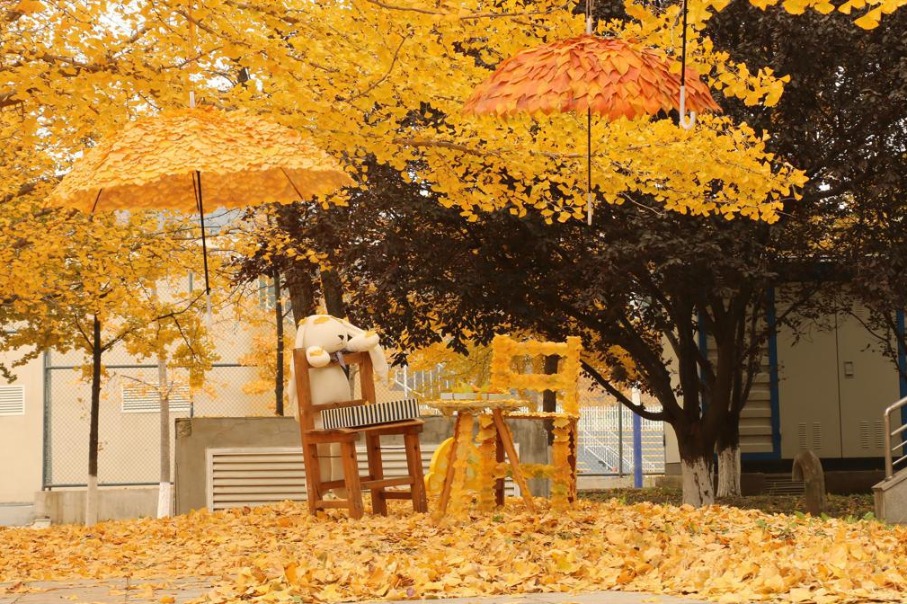Rising teen suicides demands urgent, proactive response
The child suicide rate is low but increasing. It should be zero. The tragedy of loss is real. Schoolchildren coped with the COVID lockdown. Catch-up pressure combined with fractured families adds to the stress. Should the education system embrace holistic well-being to prevent teen suicide? Oasis Hu


Matrix of causes
Chung and Chan, supervisors at the School Social Work Service of the Hong Kong Christian Service, conducted 150 interviews with schoolchildren in November to survey reasons for suicide. Academic stress at 72.7 percent ranked foremost, with family relationship issues second at 48 percent. Interpersonal relationship difficulties followed at 26 percent.
Chan notes that the factors contributing to suicide cases are often a multifaceted and interconnected matrix. It is common for vulnerable individuals to experience multiple stress points simultaneously, leading to an overwhelming loss of hope.
Chan says that suicide tendencies intensify when students return to school following long breaks - in the months after summer recess, winter holidays, Chinese New Year, and Christmas. Police data also found clustering of suicide cases and outreach for help in May and October. Post-COVID, normalized schooling, which resumed in 2023, added complications to students' lives as well.
Chan notes that students experienced enormous academic pressure trying to catch up after almost three years of lockdown. This academic burden weighed especially on pupils sitting for the pivotal Hong Kong Diploma of Secondary Education examination. No allowance for the pandemic factor was made for students sitting the HKDSE exam. Extracurricular activities, tutorials and special interest classes returned to full swing, adding to the overall burden, says Chan.
Chan's colleague Chung notes that extensive changes to Hong Kong's entire education system over the past four years have made it harder for both teachers and students to adapt. Some institutions saw about 15 to 18 teachers leaving the profession during the pandemic, disrupting several schools. In the scramble to replace teachers, emotional care for students lost priority in the affected schools, observes Chung.
The 306 suicide-related cases in 2023 highlighted that the school environment was a contributing factor, accounting for 37.3 percent of student suicide cases, for reasons including difficulties in adapting to academic progress, bullying issues, and the pressure of examinations, etc.
Family factors contributed to 28.8 percent of suicides. Wai of the Samaritan Befrienders, says that fractured family settings, such as divorced or separated parents, domestic violence, unemployed parents, etc, added to student stress.
Dysfunctional families remove a critical home support factor for students already disadvantaged at school.
Busy work schedules deprived parents of time and attention for children, leading to a lack of emotional security and well-being. They may also adopt an overly strict and performance-oriented approach, prioritizing academic results over their children's emotional needs, further exacerbating anxiety, says Wai.
- Shanghai to revoke licenses of school meal supplier
- Stunning aurora borealis observed over farm in Heilongjiang
- Metog county in Xizang transforms from isolated outpost to commerce hub
- Shenzhou XX mission crew returns after debris delays landing
- Main parachute of China's Shenzhou XXI return capsule deployed
- China's Shenzhou XXI propulsion capsule separates from return capsule




































